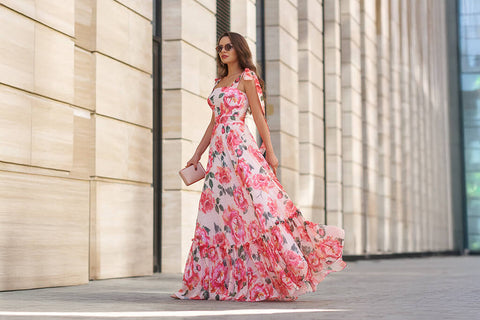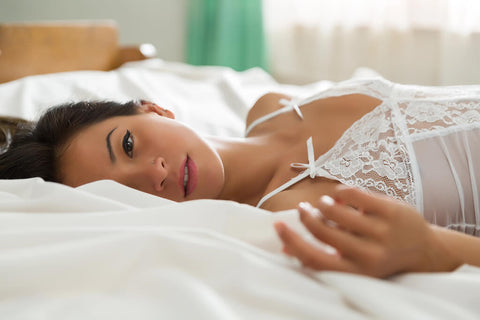- Lightroom Presets
- Mobile Presets
-
Photoshop
-
Learn
-
Support
-
Install
- Best Sellers
- Blog
By Noah Witt on | No Comments

Mobile photography is one of the most rapidly expanding and exciting fields of photography. The relatively new capability to both take and edit photos in Lightroom on a mobile phone has elevated photography to a whole new level.
One of the most important and yet underused mobile editing features is the ability to adjust and edit colors in a photo. In this tutorial, I will explore how to edit color and lighting in Lightroom Mobile to make ordinary photos look extraordinary using my iPhone.
Let's start with this average photo I took of my father on a stormy day in the mountains:

The first step in creating an amazing edit is to complete a few basic adjustments before moving on to the more creative and specific adjustments.
Let's Start with the “light” panel. For this specific photo, my subject is darker than preferred and the entire photo needs more contrast, so I increased contrast, highlights and shadows, and decreased the whites and blacks to get the look I was trying to achieve, while still making sure I preserved as much detail as possible.
I also added a slight “S” curve in the tone curve to create even more contrast and to soften the clouds in the sky.

Next, let's move to the “effects” panel. This panel has many sliders that can drastically affect and improve photos.
Because iPhone photos are TYPICALLY over-sharpened to begin with, I decreased the texture to balance that out. However, to achieve a dramatic affect and enhance the clouds in the sky, I increased both the clarity and dehaze sliders. I also added a slight vignette to draw the viewer’s eye towards the subject of the photo (see specific adjustments below).

Next let's go to the “color” panel. This is possibly the most powerful panel in the Lightroom Mobile App!
First make sure the temperature and tint are adjusted to look natural, then adjust the vibrance and saturation sliders for the desired effect. For this photo, I increased the vibrance and decreased the saturation to achieve a more dramatic look (specific adjustments below).

Now, onto the color grading section of the color panel where we can change the tint, hue, and luminance of the shadows, midtones, and highlights of a photo INDIVIDUALLY.
Since this photo appears to be taken in a cold harsh environment, I wanted to bring out a blue/teal color in the shadows and use the luminance slider to darken them. I also added a slight orange hue into the highlights to preserve the warmth in the skin tones as well as the ridgeline.
Generally speaking with portraits, bringing “colder” tones such as blues into the shadows and “warmer” tones like red and orange into the highlights will attract the viewer’s eye towards the subject of the photo, since a viewer's eyes are naturally pulled towards warmer colors.

Next, let's look at the “color mix” section of the color panel, a very powerful tool which is often overlooked. The "color mix" panel allows us to adjust the hue, saturation, and luminance of EACH INDIVIDUAL COLOR that is present in the photo.
For my image, I brightened the orange hues to lighten the subject’s skin. I also made the yellow and green hues more of a colder, desaturated blue/green to produce a dramatic affect that made the background look cooler and more lush. Finally, I desaturated the cyan and blue hues to make the sky stand out less.

The last Lightroom Mobile panel we will cover is the “selective edits” panel. This panel lets us make additional adjustments to SPECIFIC areas of the photo. There are three different ways to make selective adjustments: brushes, radial filters, and gradient filters.
For my example photo, I used a combination of brushes and linear gradients to brighten the subject, decrease the definition of the background surrounding the subject, and make the sky more dramatic.
Making selective adjustments is an essential part of creating an excellent photo, because inevitably there will be parts of an image that need to be adjusted separately from the rest of the photo.

Looking at the before and after, you can see the difference is quite noticeable.
When taking photos outdoors in nature, the lighting on a subject is often less than ideal - as was the case with my photo. My original image is quite plain, boring, and “normal,” while my final edit is attention-grabbing, immersive, and draws the viewer in.
My edited image shows how easy it is use the tools in Lightroom Mobile to alter colors and tones with staggering effect.
I hope this tutorial will inspire you to go out, take some photos with your mobile phone, and see for yourself how you can make an ordinary photo look extraordinary using these color and other adjustments in Lightroom Mobile.

Do you have any questions or comments about Editing Color in Lightroom Mobile? Just leave us a comment below - we would LOVE to hear from you! And PLEASE SHARE this post using the social sharing buttons (we really appreciate it)!




Comments